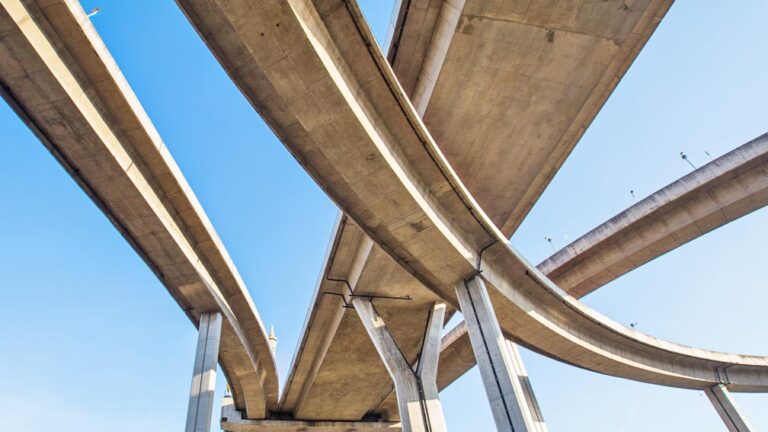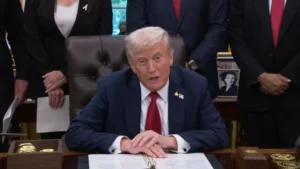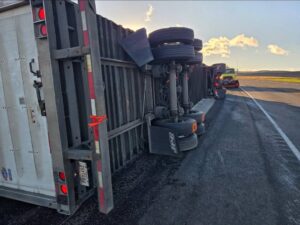WASHINGTON – From California to the east coast, all 50 states are beginning to see funding to help repair deteriorating bridges that are vital to the nation’s infrastructure and economy.
The U.S. Department of Transportation has launched the Bridge Replacement, Rehabilitation, Preservation, Protection and Construction Program (Bridge Formula Program) as part of President Biden’s Bipartisan Infrastructure Law.
The program, to be administered by the Federal Highway Administration, represents the single largest dedicated bridge investment since the construction of the interstate highway system – providing $26.5 billion to states, the District of Columbia and Puerto Rico over five years and $825 million for Tribal transportation facilities.
The total amount that will be available to states, D.C. and Puerto Rico in Fiscal Year 2022 is $5.3 billion along with $165 million for tribes.
The FHWA also published initial guidance on the new program.
“The Biden-Harris Administration is thrilled to launch this program to fix thousands of bridges across the country – the single largest dedicated bridge investment since the construction of the Interstate highway system,” said U.S. Transportation Secretary Pete Buttigieg.
“Modernizing America’s bridges will help improve safety, support economic growth, and make people’s lives better in every part of the country – across rural, suburban, urban, and tribal communities.”
Nationwide, the Bridge Formula Program is expected to help repair approximately 15,000 highway bridges. In addition to providing funds to states to replace, rehabilitate, preserve, protect, and construct highway bridges, the Bridge Formula Program has dedicated funding for Tribal transportation facility bridges as well as “off-system” bridges, which are generally locally- owned facilities not on the federal-aid highway system.
“This record amount of funding, made possible by the Bipartisan Infrastructure Law, will allow states and Tribal governments to fix the bridges most in need of repair,” Deputy Federal Highway Administrator Stephanie Pollack said.
“It will also modernize bridges to withstand the effects of climate change and to make them safer for all users, including cyclists and pedestrians. Every state has bridges in poor condition and in need of repair, including bridges with weight restrictions that may force lengthy detours for travelers, school buses, first responders or trucks carrying freight,” she added.
The Bipartisan Infrastructure Law includes an incentive for states to direct the new Bridge Formula Program funds to off-system bridges owned by a county, city, town or other local agency.
While states generally must match federal funding with up to 20 percent state or local funding, the guidance issued today notes that federal funds can be used for 100 percent of the cost of repairing or rehabilitating such locally owned off-system bridges.
More than $563 million in federal dollars is heading to Michigan to fix and maintain highway bridges.
The funding will help repair about 1,240 bridges considered to be in poor condition, the transportation department said.
Improvements also will be made to more than 5,950 bridges deemed to be in fair condition.
Illinois will receive $1.4 billion to help upgrade its deteriorating bridges.
The funding over five years will include $274.8 million in Fiscal Year 2022, that state’s delegation said in a news release, which also says Illinois is home to “more than 2,374 bridges in poor condition.”
The money will go to the Illinois Department of Transportation, which will determine how to invest it across the state for bridge upgrades.
“With $1.4 billion set aside for Illinois, this is poised to be a new era in infrastructure that will move our economy forward and create jobs,” Senator Dick Durbin, D-Ill., said in the news release. “I’m proud to have supported this historic, much-needed legislation.”
Since 2011, commute times in Illinois have increased by more than seven percent and that on average, every Illinois driver pays $609 per year in costs due to driving on roads in need of repair, the Democratic delegation said.
U.S. Rep. Robin Kelly, D-Ill., said the funding will “create jobs, reduce commute times and most importantly, ensure that our bridges serve as safe and helpful connections throughout our great state.”
West Virginia is slated to receive more than $500 million to repair and upgrade bridges across the state.
West Virginia would receive the funding over the next five years, starting with $101.3 million for fiscal year 2022, the Charleston Gazette-Mail reported.
The state has one of the highest percentages of structurally deficient bridges in the country, according to an analysis of federal data by the American Road and Transportation Builders Association. The number of West Virginia bridges that need repair increased from 1,222 in 2016 to 1,545 in 2020, the organization found.
The Associated Press contributed to this report.
The Trucker News Staff produces engaging content for not only TheTrucker.com, but also The Trucker Newspaper, which has been serving the trucking industry for more than 30 years. With a focus on drivers, the Trucker News Staff aims to provide relevant, objective content pertaining to the trucking segment of the transportation industry. The Trucker News Staff is based in Little Rock, Arkansas.















